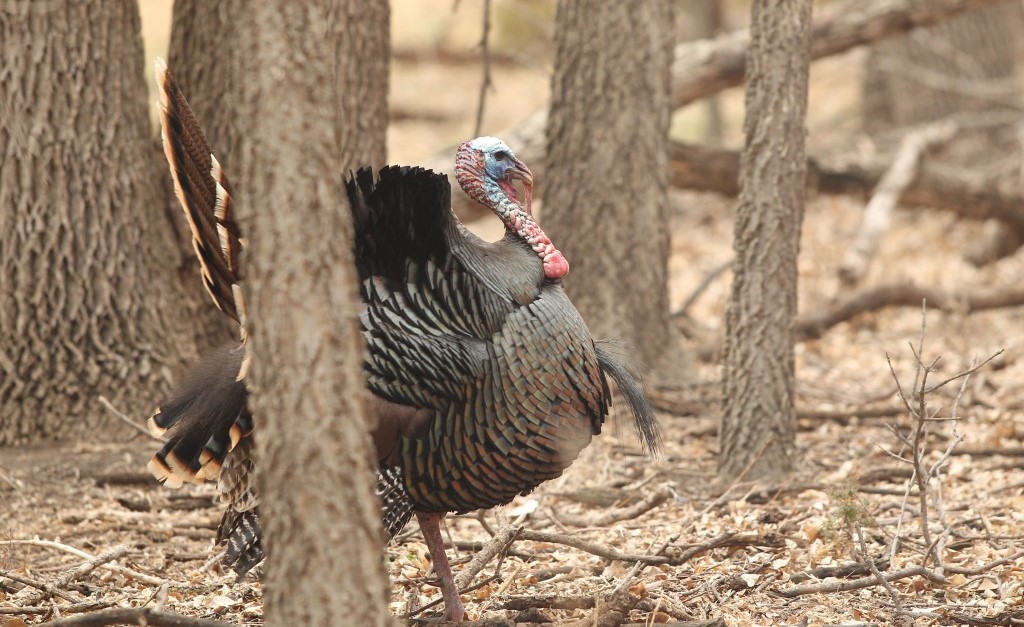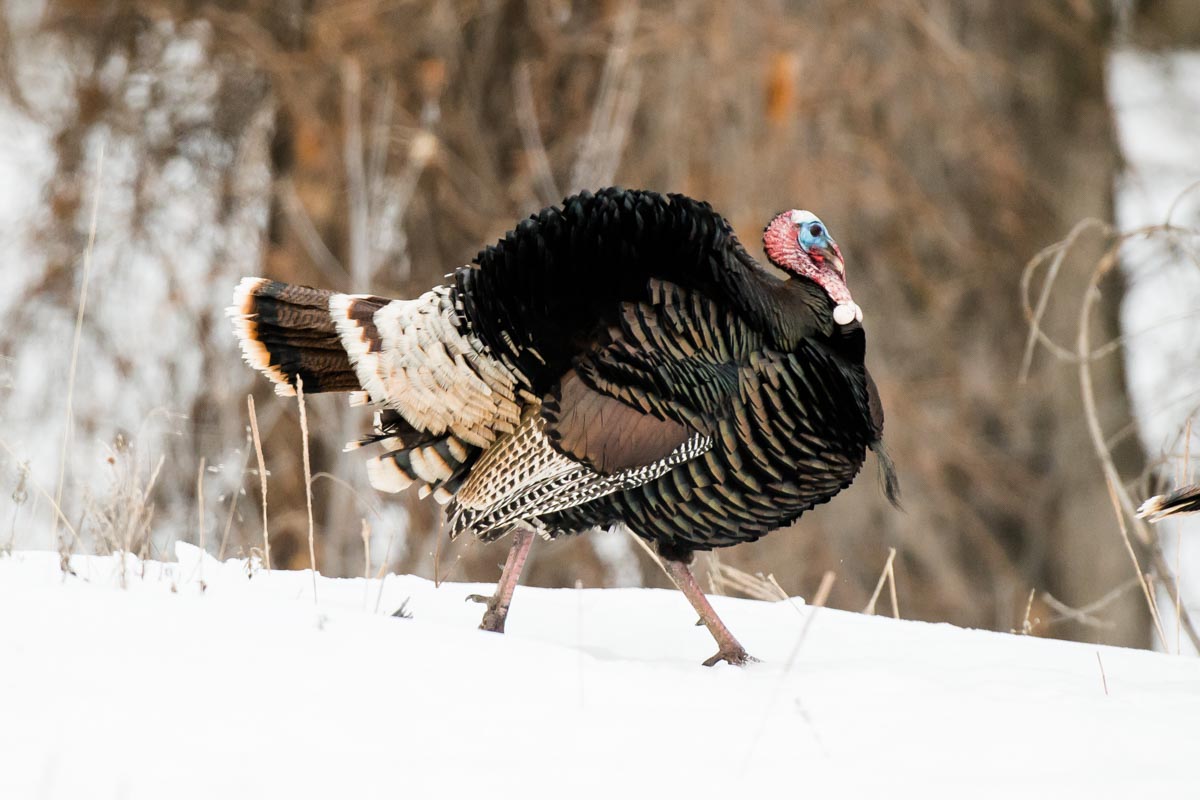Nebraska weather. Don’t like it? Wait a short while. It’ll change, maybe.
Reality is rarely so kind.
The Cornhusker State’s spring wild turkey hunting seasons are in full swing amid the ever-changing, ever-fluctuating, sometimes unpredictable weather patterns and conditions. But one unfortunate thing has been fairly consistent this spring: Wind. And we’ve lots of it!
Nevertheless, should we wait to turkey hunt until we have calm to no wind and those beautiful bluebird-like days with warm sunshine? If time is not available to do that, we might have to hunt when the weather is dealing us fits. What if the weather does a 180-degree turn when we are in our blinds trying to call in a big gobbler? What then?
All good questions. For answers, I went to one of our expert, more seasoned wild turkey hunters, Nebraska Game and Parks Commission outdoor education specialist, Aaron Hershberger.
“I’ll say this first: “Patience in less than ideal situations is the main thing to remember when turkey hunting in poor weather.”
Inclement weather can sure slow things down with wild turkeys. They tend to stay on the roost longer in the morning, fly down later, hang around the roost area longer, move slower during the daytime particularly while feeding and put off vocalizing, if done at all.
“Even with rougher weather conditions, if you’ve done your homework, the birds are routine-oriented and not going to be as far away as we sometimes convince ourselves they are,” explained Hershberger.
The good news is bad weather does not mean bad hunting. “The keys,” said Hershberger, “are to go when you can safely go, have the proper gear, analyze the conditions, determine how the conditions will affect turkey behavior and adjust your strategy appropriately.”

Let’s also remind ourselves that blinds can be a hunt saver in unfavorable conditions.

Here is how to cope with some of the more common inclement weather scenarios for spring wild turkey hunting in Nebraska, according to Hershberger:
Wind
Seems the wind always blows in Nebraska and sometimes more today than yesterday and the day before that. Turkey hunting in wind is downright difficult. Flapping branches, waving grass and rustling leaves make male wild turkeys quite wary. “Wild turkeys in Nebraska are accustomed to wind, and more so than any other gobblers I have pursued,” pointed out Hershberger, who is originally from Iowa. “Which is good, because wind is rarely absent here on the Great Plains.” Turkeys know how to use the creases in the landscape (e.g. More open creek bottoms, valleys and hollows and the leeward sides of hills) to get out of the wind and still be able to see. However, the stronger it blows the fewer places they will have to escape it. “The challenge for the hunter, said Hershberger, “is to get to these places before the birds do.” Once in them the turkeys may not leave until they absolutely need to do so. “Bumping them out of one of these areas is crucial not to do because the birds will have little interest in returning,” he added.

Extreme Wind
A major challenge with spring wild turkey hunting is high wind or what I call extreme wind and how it affects sound. Inevitably, your calling efforts will not reach as far. Worse yet is the hunter’s ability to be able to hear any response with high winds. “My go-to call in extreme wind is a big, squeaky box call that many longtime hunters term a “boat-paddle,” indicated Hershberger. “These things can create hen music that travels better than any other call.” The box calls do not sound like much if you are close, but further away the calls are hen-like and raspy. What about trying to hear gobbles with the wind howling? “I’ll pass along a tip I learned from my brother regarding that,” he remarked. “Position yourself on the downwind side of where you expect the gobblers to be. Take advantage of any pauses with gusty conditions to call. Having great hearing, turkeys can pick up calling better than we think. If they gobble you’ll have a better chance to hear it sitting downwind.”

Rain, Drizzle, Storms and Fog
Driving, soaking rains often cause wild turkeys to act differently. Expect turkeys to stay on their roost longer with moderate to more intense rain. Hershberger noted: “With rain, once off the roost, wild turkeys know they are better off in the open to use their sharp eyes for defense and realize their feathers don’t work well to repel moisture when continually brushed up against wet vegetation. This means pastures; meadows, fields and larger clearings in woods are where you will find the birds.” Thunderstorms are something completely different. For your safety, you should never turkey hunt in stormy conditions. “No gobbler, jake or bearded hen is worth injury or death in a severe thunderstorm or tornado,” emphasized Hershberger. However, when it stops raining, fog lifts or a thunderstorm moves off and the sun comes out, you can encounter some of the best gobbling activity and turkey movement of the day. “To set up after an event like these, I would suggest looking for sunny places, out of the wind and usually in the open or near open areas.”
What about light rain, mist or drizzle? “Turkey feathers work a bit like shingles on a roof,” described Hershberger. “Raindrops will roll from one feather to the next until they fall off. So a light rain, mist or drizzle means very little.” Though if the rain intensifies and gets a bit heavier some birds may make use of “umbrella cover” where they can get some overhead or canopy protection from the falling raindrops. “Often times, with rain, toms seek cover in old growth woods, particularly those woods that are more open so they can see. When rain showers are brief in duration you may notice this behavior, as well,” Hershberger continued. “Just remember, for turkeys, life continues even when it rains all day.”

Sleet
If there is one weather aspect that wild turkeys are likely to despise the most, it is sleet. “Turkeys hate sleet and I do, too!” Hershberger exclaimed. “Sleet will weigh their feathers down, quickly rob them of body heat and not enable them to hear or see danger.” Gobblers will stay on the roost longer in the morning if it is sleeting. “If their roost does not provide adequate protection from the elements, they will head for the nearest open stands of timber with good canopy cover at first light. Be there waiting for them,” he said.

Snow
Unless it comes in blizzard proportions, or mixes with sleet, a little snow barely registers for turkeys whose primary focus is breeding. “Tactics for spring wild turkey hunting need to change very little when it comes to snow, if at all,” commented Hershberger, “other than making sure you have a dry place to sit. Getting a wet bum while working a gobbler is not much fun.” Being a bit louder on the call might help, too, as the falling snow may muffle sound.

The post Strategies for Turkey Hunting in Foul Weather appeared first on Nebraskaland Magazine.
















